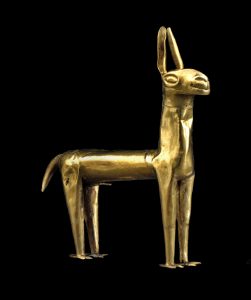The new Peru Show at the British Museum is a Triumph. But…
 A big new show about Peru has just opened at the British Museum to showcase the almost four millennia of Peruvian civilisation that preceded the destructive arrival of the Spanish.
A big new show about Peru has just opened at the British Museum to showcase the almost four millennia of Peruvian civilisation that preceded the destructive arrival of the Spanish.
It’s the first at the museum since almost the Second World War, so quite a moment to have a look at the Incas and their predecessors.
I’m pleased to report that thanks to energetic and intelligent curatorship from Jago Cooper (known to TV audiences for his work on presenting Latin American archaeology) and Cecilia Pardo, this is a triumphant success.
That said, the curators have their work cut out. Although using some of the central main space in the British Museum, it’s a smaller show than others have been, so needs to be concentrated.
And I know only too well from my Cochineal Red book – being sold alongside the exhibition – the challenges already involved in trying to present the huge span of Peruvian prehistory to an audience who may be unfamiliar with the route map of the rise and fall of its civilisations. …
The new Peru Show at the British Museum is a Triumph. But…Read More »
The new Peru Show at the British Museum is a Triumph. But… Read More »

 He was describing his recent work at a site called Huaca el Pueblo, where they uncovered a tomb dating from around 300 to 500 AD. Inside were the remains of four individuals, two men and two women, all in their twenties at the time of death. Working at frantic speed over the space of five weeks to beat the threat from both the humidity and local looters, his team of archaeologists injected alcohol under the mask of ‘the highest status individual’ – who Bourget has called ‘the Lord of Ucupe’ – to loosen it up for removal from his face in the normal way. They then used thin slivers of bamboo to lift it, only to discover another mask underneath, like a Russian doll.
He was describing his recent work at a site called Huaca el Pueblo, where they uncovered a tomb dating from around 300 to 500 AD. Inside were the remains of four individuals, two men and two women, all in their twenties at the time of death. Working at frantic speed over the space of five weeks to beat the threat from both the humidity and local looters, his team of archaeologists injected alcohol under the mask of ‘the highest status individual’ – who Bourget has called ‘the Lord of Ucupe’ – to loosen it up for removal from his face in the normal way. They then used thin slivers of bamboo to lift it, only to discover another mask underneath, like a Russian doll.